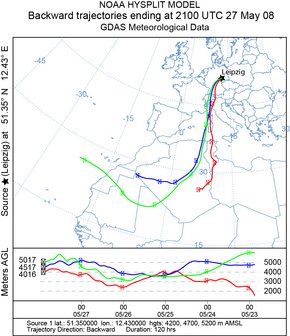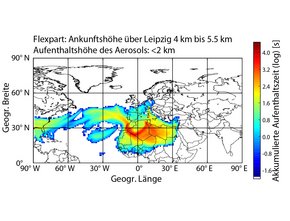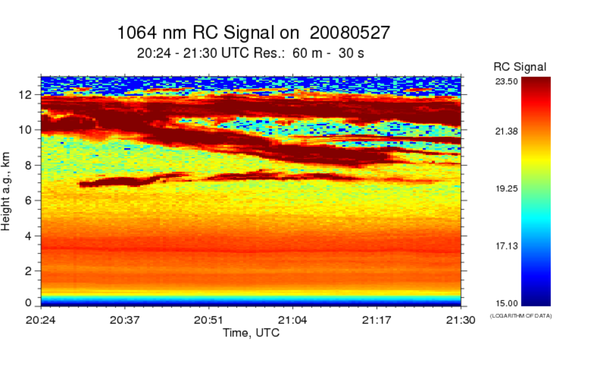
Fig. 1: HYSPLIT backward-trajectories ending at Leipzig on 27 May 2008, 21:00 UTC. Arrival heights of the three trajectories above Leipzig were 4200 m (red), 4600 m (blue), and 5200 m (green). The trajectories point to the Saharan region as origin of the air mass.
Trajectory models
The most-frequently used trajectory model at TROPOS is the HYbrid Single-Particle Lagrangian Integrated Trajectory (HYSPLIT) Model of the U.S. National Center for Environmental Prediction (NOAA).
For the input values start time, start location, and start height, either forward- or backward-trajectories are calculated. Whereas forward-trajectories provide a forecast of the pathway of an air parcel, backward-trajectories depict the path an air parcel has passed in the past.
Figure 1 shows three backward-trajectories calculated with HYSPLIT for air parcels that arrived above Leipzig on 27 May 2008, 21:00 UTC. The arrival heights of the trajectories above Leipzig were 4200 m (red), 4600 m (blue) and 5200 m (green). The backward-trajectories show the pathway of the air mass during the past 120 hours. All trajectories point to the Saharan region as the origin of the airmass.


